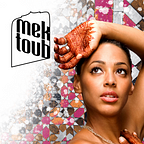Marrakchi Henna: A Little Known Treasure
When speaking about Moroccan henna styles, we often hear three terms: Fessi, Marrakchi, and Saharaoui. These three styles constitute the “big three” of Moroccan henna design, being the most recognizable and highly developed regional styles. Fessi and Saharaoui (from the city of Fes, and from the Saharan regions of Morocco respectively) are easily spotted and differentiated — but what about Marrakchi?
As you probably guessed from the name, Marrakchi is the style of henna associated with Marrakesh and its surrounding areas in the south of Morocco. We had previously been told that the Marrakchi style of henna art was primarily floral in nature and less geometric — a misunderstanding which was corrected on our last two trips to Morocco.
While Marrakchi design does often contain floral elements, it is not strictly floral as in the examples above. They would be a Moroccan conception of Khaleeji design, meaning designs which come from the Middle East.
As a major style, Marrakchi may be less obvious to the untrained eye. The difference between Marrakchi and Fessi design can sometimes be hard to spot, and it really lives in the details.
Our major instruction in the differences between Marrakchi and Fessi style design was facilitated by two experts, Nadia and Khadija, who are well versed in each style and very helpfully compared their approaches when we met with them at Mektoub Marrakech 2022.
Generally, Marrakchi design uses a larger library of motifs than Fessi does. It is a melange of elements, including parts and pieces from Fessi, Saharaoui, and Khaleeji design. There are also certain motifs which are unique to Marrakchi style designs, and certain names for different motifs which are used only in and around Marrakesh.
As Khadija had taught us in the days prior, Fessi design is fairly limited in its motifs — it is all about working with a constrained set of motifs but combining them in different ways to make intricate designs. Straight lines, zigzags, plant shaped motifs, checkerboards, and sometimes dots are all found within Fessi design, and could themselves be the only motifs used.
Marrakchi design adds many more to this list including flower, plant, and leaf shapes from Khaleeji design, repeating borders and curved shapes from Saharaoui design, and some that are unique to Marrakchi design, like ladder shapes, chevrons, diamond borders, and a clove motif, modeled on the whole spice.
Nadia explained two important motifs to us, which have unique characteristics in Marrakchi design. The clove motif, called qaranflet in Moroccan Arabic, is not found in Fessi design. It often takes the form of a cross overall, but the qaranflet motif itself is specifically found in tiny diamond or cross shaped finials, themselves quite close in appearance to actual dried whole cloves.
The second motif is not unique to Marrakchi design, but its name is. A zigzag line which is sandwiched between two sets of parallel lines is one of the foundational motifs of Moroccan henna — we often refer to this motif as la chaine, a French term which has been adopted by many artists. Nadia told us that while the motif is the same in Marrakchi style, the specifically Marrakchi variant of Moroccan Arabic names it bou arrosh. We were not able to obtain a translation of this term into English or French, as it is specific to the type of Arabic spoken in and around Marrakesh and was outside the abilities of our translators. It may also come from Tamazight, the Amazigh language spoken before Arabic was adopted in Morocco.
There was so much more we would have liked to learn from Nadia about the intricacies of Marrakchi design, had we the time and translation necessary! One thing is clear, Nadia is a true knowledge holder in the Marrakchi henna tradition. Artists working in this style have become very rare and we are so happy that Nadia is continuing to carry the torch for Marrakchi henna. If you go to Marrakesh be sure to visit the Marrakech Henna Art Cafe where Nadia works full time, and have her do some Marrakchi henna for you!
